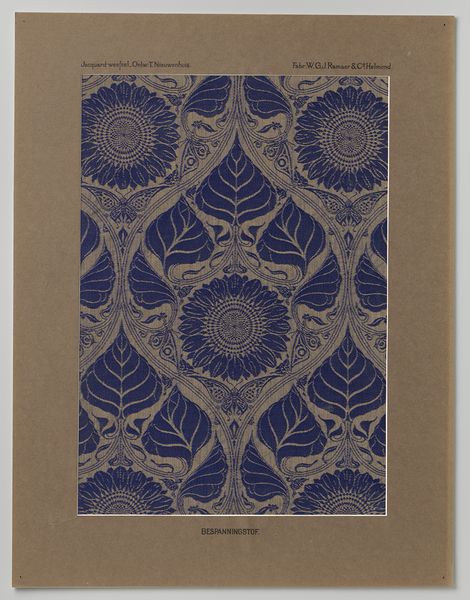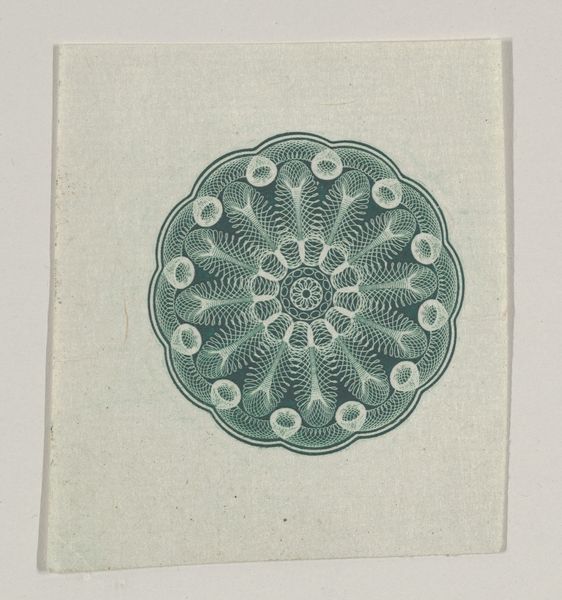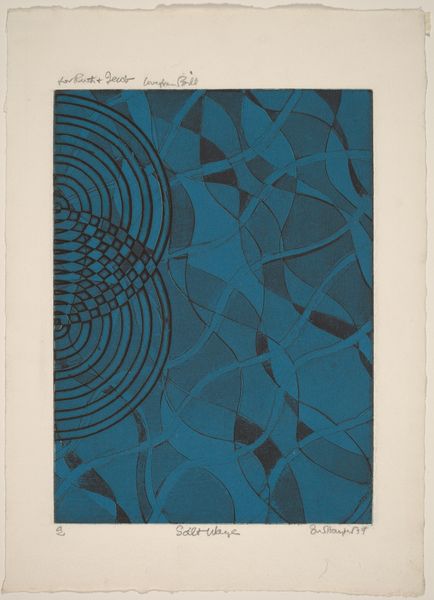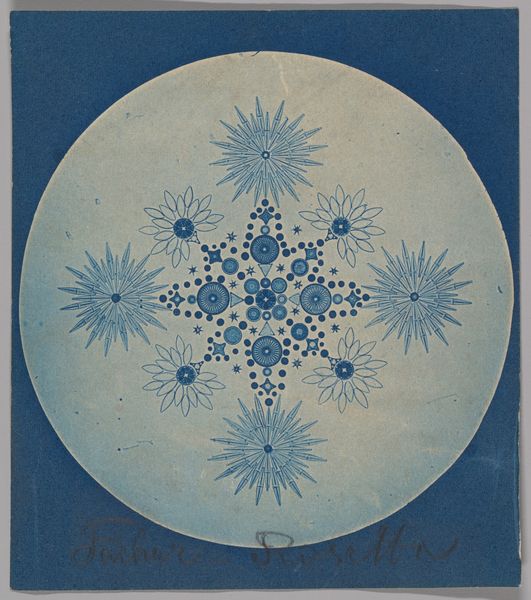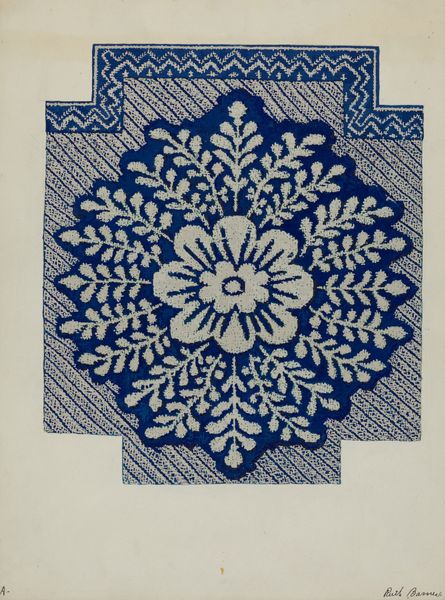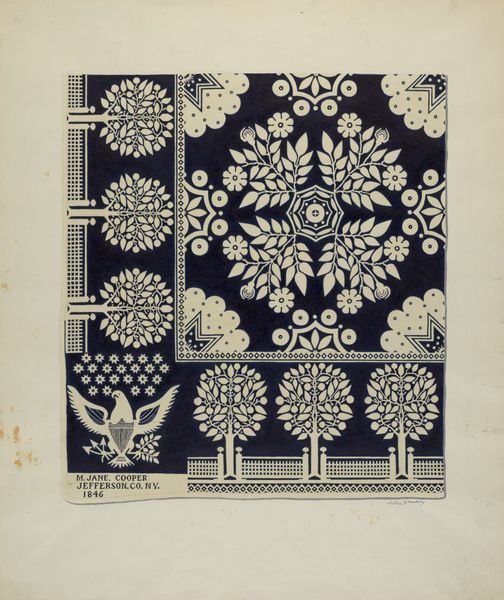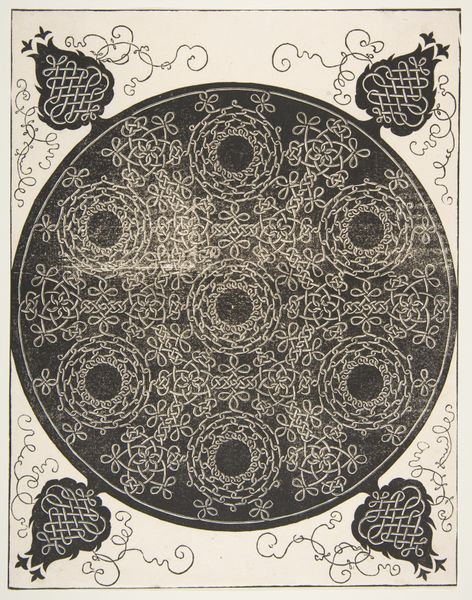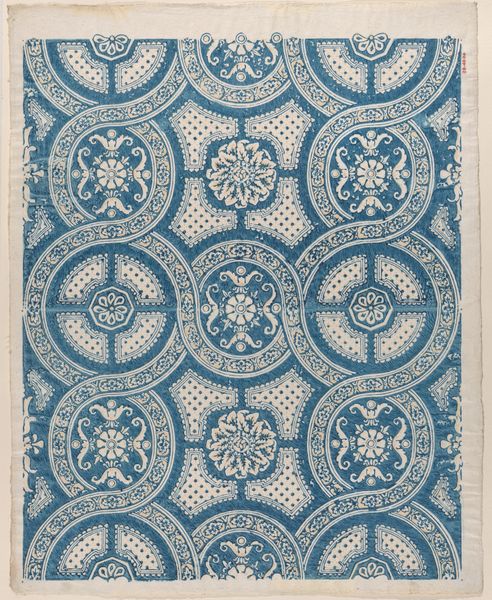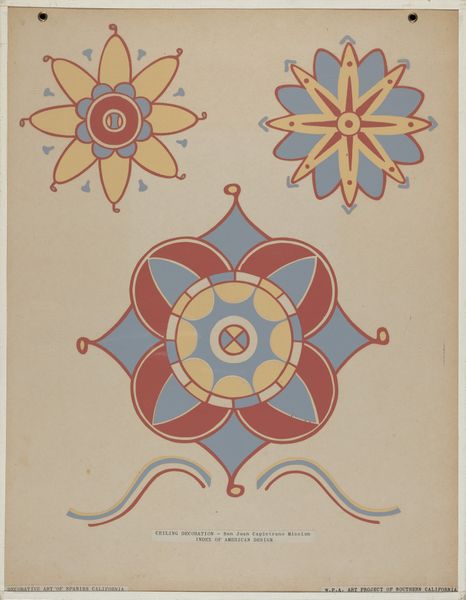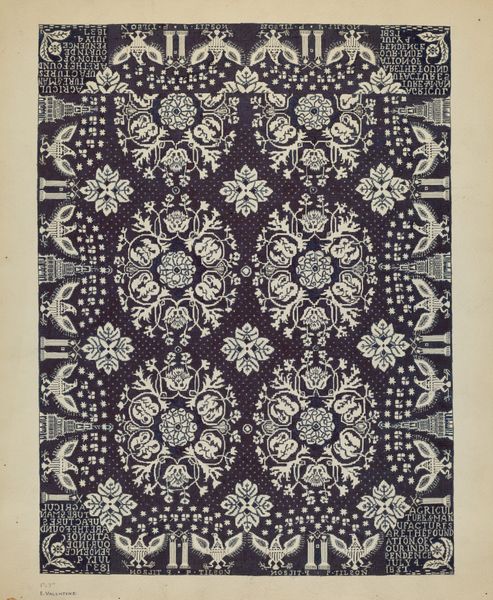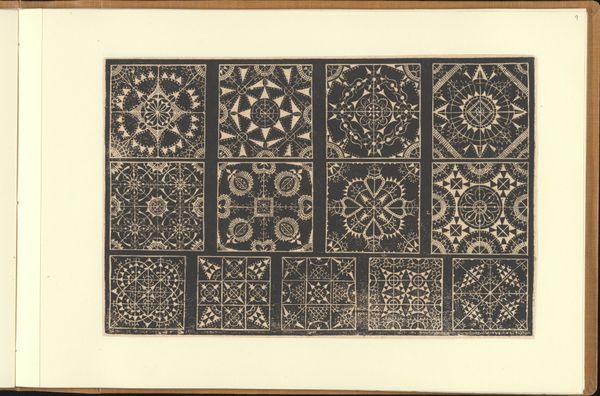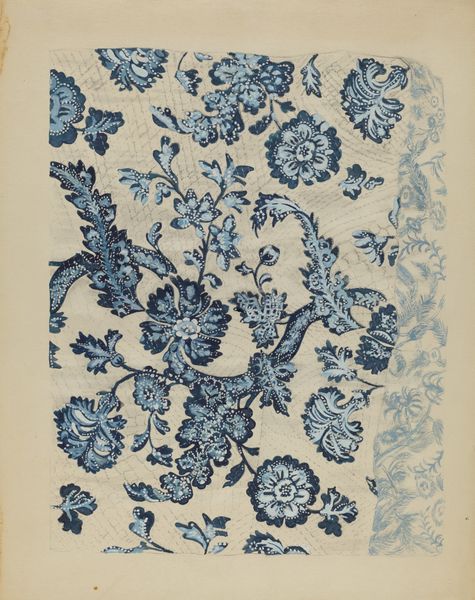
drawing, print, textile
#
drawing
# print
#
textile
#
geometric
#
design for print
#
pattern repetition
#
repetition of white colour
#
decorative-art
#
imprinted textile
Dimensions: height 343 mm, width 243 mm
Copyright: Rijks Museum: Open Domain
Curator: I'm immediately struck by the graphic nature of these designs against the vibrant blue backdrop; it's surprisingly bold for its time. Editor: This is Alois Auer’s "Vijf kantpatronen" or "Five Lace Patterns", created in 1855. It's an interesting piece, demonstrating the intersection of textile design and printmaking in the mid-19th century. We might explore how designs for print were related to textile production during that period and for whom were they intended. Curator: Yes, I notice the visual rhythm that establishes what could become a kind of shorthand of the feminine sphere of the time; were women encouraged to find solace or power through pattern-making as a form of personal or even political expression? These pieces have echoes of domesticity. Editor: Definitely. These geometric, lace-like motifs are strongly tied to symbols of hearth and home and also femininity and the bourgeois. In exploring the historical reception of similar designs, one can examine if it became the tool of expression, empowerment, or whether the feminine aesthetic has been historically diminished and the value of handicraft downplayed, as supposedly existing outside a framework of masculine production? Curator: And the very act of transferring these delicate patterns onto paper – was it democratizing the access to craftsmanship, giving those with means a tool to further their art, but also restricting those whose expertise stemmed only from the skill of lace-making, further pushing down a possible career path? Editor: Precisely. There is always an interaction between a perceived cultural aesthetic value and a societal value based on, shall we say, political motives. Thinking about the patterns themselves, what kind of cultural encoding is represented by this imagery? Is the circular nature simply a visual motif or also a cultural marker implying continuity or closure? Is its design inherently nostalgic, evoking feelings of sentimental timelessness and a rooted, almost ancient practice? Curator: This is fascinating to consider given what was going on during that era; thinking of the industrial revolution and the mass factory production, these types of designs must have become markers of identity that emphasized the local and "authentic" while providing an antidote to the fear of modern displacement. Editor: The act of replicating the craft, transforming lace patterns into reproducible prints, allowed a further understanding of its role within culture and commerce. Curator: Considering its implications on identity and society and its many visual metaphors, I can’t think of lace designs the same way again! Editor: Me neither. This opens up a further line of inquiry into the cultural memory embedded in textile design and the myriad of readings around social structures.
Comments
No comments
Be the first to comment and join the conversation on the ultimate creative platform.
